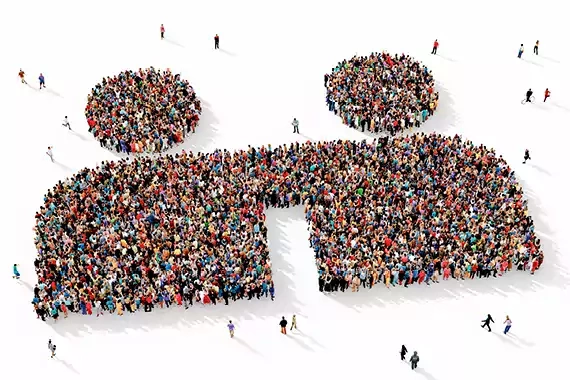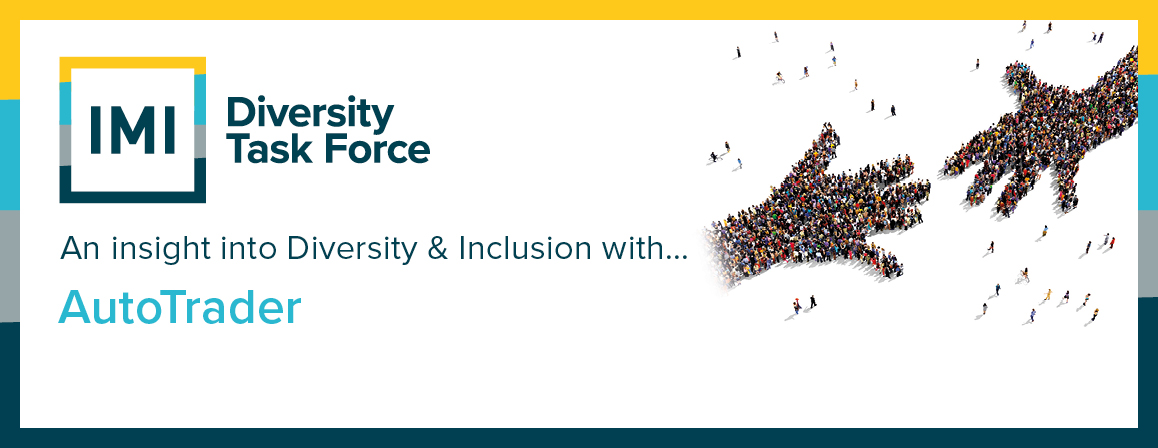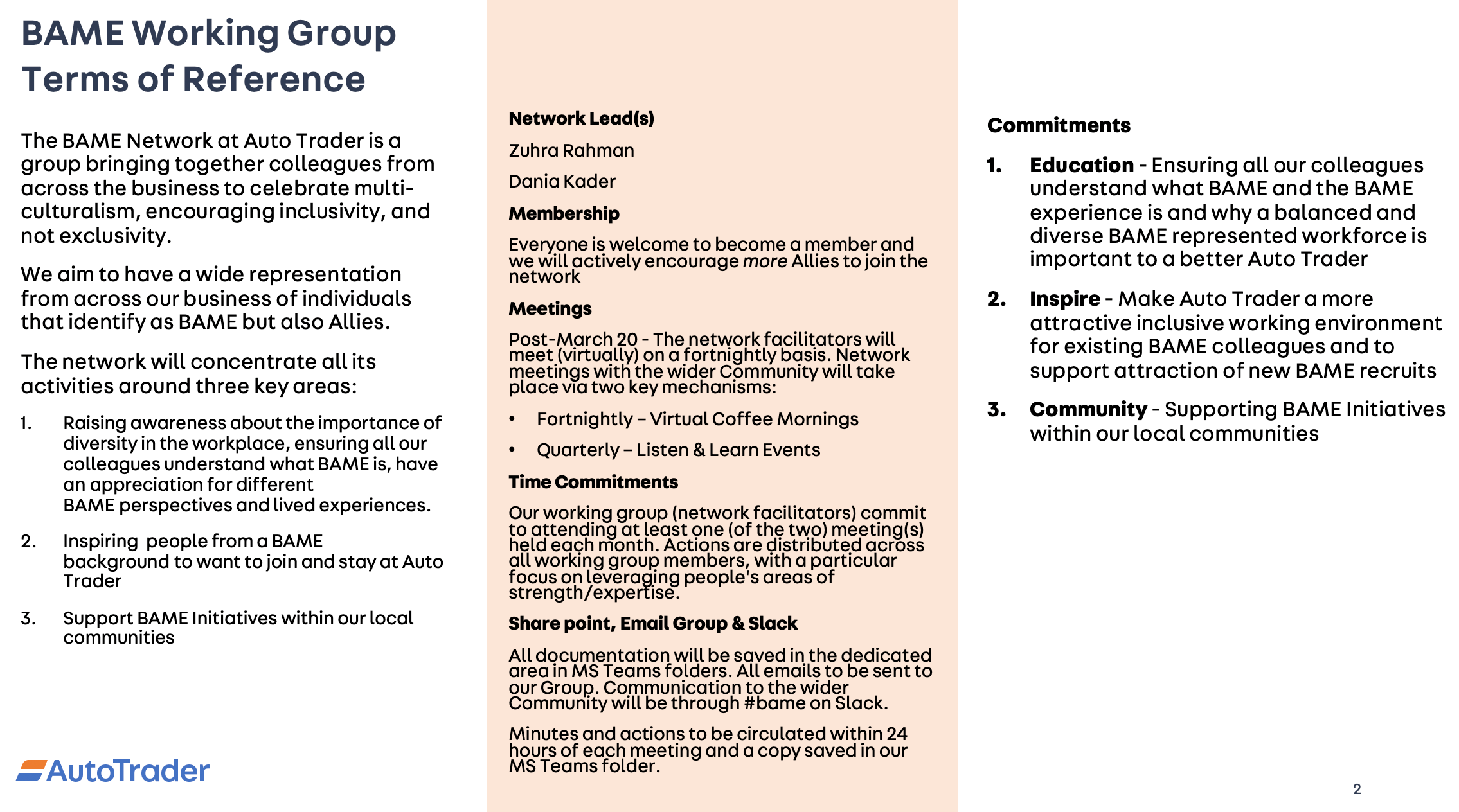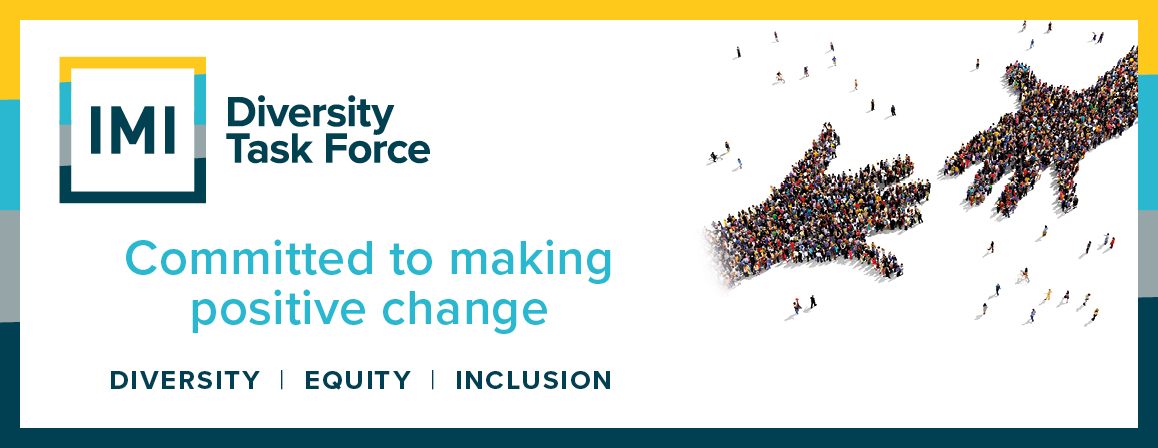This case study attempts to use terminology that is acceptable to under-represented groups, but we appreciate that some of what is written may be problematic. For this we apologise. As with many others, we are on a learning journey and hope that you will bear with us as we move forward together.
AutoTrader – Joint Case Study
Name: Russell Warman (RW)
Company name: Auto Trader UK Plc
Your position: Head of Infrastructure & Operations
Name: Nathan Dyke (ND)
Company name: Auto Trader UK Plc
Your position: Sales Operations Lead
Give us an overview of your organisation
We are the UK’s largest automotive marketplace. Established in 1977 and online since 1996.
Auto Trader exists to grow both its car buying audience and core advertising business. It will change how the UK shops for cars by providing the best online car buying experience, enabling all retailers to sell online. We aim to build stronger partnerships with our customers, use our voice and influence to drive more environmentally friendly vehicle choices and create an inclusive and more diverse culture.
Auto Trader started life as a classified magazine and is now a 100% digital business. Our rich history gives us nearly 40 years of brand heritage and trust - unusual among online companies.
How many employees does your organisation have?
Circa 1,000 employees across offices in Manchester, London and Dublin
What’s your role and how long have you been with the organisation?
RW - My role is based in the technology team, and I’ve been at Auto Trader since 1998.
ND - I am a Sales Operations Lead and Board Engagement Guild Member. I have been with Auto Trader since 2012.
What’s your involvement with D&I within your organisation?
RW - I’ve been involved with the wider D&I Guild at Auto Trader since its inception, helping to organise the early AT Women’s Network meetings, providing support for our One Auto Trader, diversity and inclusion awareness workshops. I’m currently one of the co-leads of our Disability and Neurodiversity Network
ND - I co-led Auto Trader’s BAME (Building a Multicultural Environment) Network from its inception in December 2018 until December 2021, as well as being a member of Auto Trader’s Diversity and Inclusion Guild during this time.
Tell us why diversity and inclusion is important to you as an individual.
RW - As a father of three girls, I initially got involved with the Women’s Network as I felt passionate about ensuring that women had the same opportunities as men. I felt it was important to act as an ally to raise awareness against my male colleagues about the inequality and encourage them to look for opportunities to support or champion people from less represented backgrounds.
ND - Diversity and Inclusion is important to me as I believe everyone should have an equitable chance of being successful, included and happy, regardless of their background or identity. Sadly, in many parts of society this is still not the case and I want to be part of the change I want to see in the world.
Why is diversity and inclusion important to your organisation?
RW - We strongly value the benefits of diverse thinking and what this can bring to an organisation. We also want to represent the people and communities we serve. Having a diverse mix of people within our business enables us to do that and of course without have an inclusive culture, we don’t create the right environment for people to thrive and succeed.
ND - Auto Trader is committed to nurturing a culture where everyone can reach their full potential. A workplace where we are celebrating the uniqueness of our people, supporting their wellbeing and development, and enabling them to be their best self at work. Culture is one of the key USP’s that makes Auto Trader a great place to work. One that is great to work for everyone, is a huge strategic advantage, in a highly competitive market for attracting the best talent.
How long has D&I been discussed at a strategic level in your organisation?
At least 7 years
Tell us about the challenges faced by your organisation, which led you to focus on diversity and inclusion.
After we moved from print to digital only it became apparent that the gender balance shifted to 70% men and 30% women. This started the focus on diversity because we introduced initiatives to address the gender imbalance. Through the years this evolved and is now a comprehensive strategy.
We get feedback from our colleagues via the staff engagement survey and because the survey data can be linked to the HR system, we can analyse the results by different groups. It is all anonymous, but we are able to aggregate the results to see how a particular group are feeling and what their experience is.
For the first couple of years we focussed on education and awareness, then we started taking action.
Please outline some of the D&I initiatives your organisation has introduced
For the past six years we have been building employee Networks (eg , BAME Network, LGBT+ Network, Disability & Neurodiversity Network, Women’s Network, Age Network, Wellbeing Network, Family Network).
The Networks get everyone involved in designing and delivering our strategies arounds D&I and also People & Culture. So this isn’t just driven from the top, the initiative comes from all around the organisation and everyone works in a collaborative and coordinated way in order to achieve what we are trying to achieve. The Networks came about as a result of workshops. These are day and a half workshops that everyone at AT takes part in when they join. Out of the workshops come volunteers who want to take part in a particular Network. The Networks have their own terms of reference and can recruit their own network members.
The Networks have one executive sponsor, two or three network leads and they have between six and eight facilitators. These roles have defined job descriptions. Then each Network might have 150 to 300 members that join events or help with a specific event.
For D&I our overarching commitment is to increase representation, so that we represent the communities we operate in and lager society. We want all our people to be able to be the best that they can be and want to enable them to collaborate with each other. The Networks to provide a safe space for people to work together, but they also work collaboratively.
The Disability & Neurodiversity network came about because two people were really keen to do something in that area. It is now led by three lead facilitators, sponsored by a member of our executive team and has an active group of facilitators. This Network is responsible for creating annual commitments and working towards meeting these. The Network is also responsible for raising awareness, achieving commitments, and contributing to the overall success of the D&I strategy.
After working with the National Autistic Society to provide training to line managers we embarked on achieving the award of autism friendly employer, which we successfully gained, becoming the first company to do so.
We’ve achieved Disability Confident Leader, to support potential colleagues who might be nervous disclosing a disability during the interview process and ensure they get any necessary adjustments.
Reverse Mentoring was also introduced which enables board members to have exposure to people within the organisation that are from diverse backgrounds.
Who was involved in those decisions?
Our Head of People and Culture, our Network Sponsor and the lead facilitators took the initial steps to agree our objectives. In subsequent years our network facilitators are also actively involved in the decision-making process.
Were there any other organisations that you took inspiration from?
We’ve spoken to many organisations and learnt lots from each of them. We have mainly focussed internally though. We’ve used our own data to understand our people and what’s important to them. We mainly took inspiration from the charities we asked for support from. We then created our commitments and initiatives tailored to meet them.
Tell us about the things you’ve introduced.
Overarching D&I initiatives that were introduced last year:
Inclusive Leadership Programme for all leaders across the business, not just people managers but strategic leads and network leads, in total 230 people when through that programme and it is continuous. They explore biases and how biases can impact individuals in the workplace. They must undertake a 180 degree survey and a self-assessment to give them an idea of how individuals around them feel about their behaviours in the workplace and whether they are showcasing inclusive behaviours.
Diverse Talent Accelerator Programme is aimed an individuals in their mid-career. The idea is to accelerate diverse talent who have high potential that will leave to a pipeline of diverse future leaders.
We made changes as part of the Autism Friendly Award to our office environment. Improving our visitor signposting and experience. Creating quiet spaces for colleagues with adjustable lighting.
We introduced interns and placements for people with disabilities through the Leonard Cheshire, Change 100 and National Autistic Society.
We’ve partnered with Inclusive Companies and signed up for the Valuable 500 making pledges about our continued commitment to making positive changes.
We have introduced the Hidden Disabilities Sunflower Scheme.
How did you approach this and then roll it out?
We’ve made small, incremental steps rather than trying to do too much at once. Starting with one or two interns or placement, making sure the manager and team are equipped to provide good quality work experience and can adapt to suit the placement. We constantly review, feedback and iterate to ensure we continually improving the experience for candidates.
How are you measuring the success and impact of these initiatives?
Activities undertaken by the Networks is often initiated from feedback in the staff engagement survey. The surveys are not mandatory to complete, but the completion rate is 80% - 90% so staff are engaged enough to complete the surveys and contribute with ideas. In the survey we want to see how engaged people are feeling with their leaders, their team, their personal development, their wellbeing and the company. This is how we measure the inclusion initiatives.
Please tell us how people have reacted to the D&I initiatives your organisation has introduced. How have employees reacted?
Overall, the reaction has been positive, we’ve seen this in the number of people who attend or contribute to our channels. It’s also opened up more conversations and encouraged people to share their own stories, experiences and offer support to their colleagues. There’s a lot of help and advice provided by the Network rather than the leads which is great to see.
Had 80 applications for the Diverse Talent Accelerator programme for 30 places.
Have there been any situations that have required careful management?
Not to date
How have your customers reacted?
We regularly get contact from customers asking to find out more about what we are doing. They have seen our CEO talking on a panel somewhere and he might be mentioning some of the initiates we have introduced and they want to understand more.
We try to collaborate with our customers a lot, we have offered one of our D&I workshops to one of our customers so that they can participate and they can take it back to their business.
Our LGBT network has been involved in a network within the automotive industry.
We are members of the 30% Club
How have your competitors reacted?
No Data
Please tell us about the impact these initiatives have had.
Key objectives have been to increase representation and engagement.
Representation has been growing steadily throughout the years our workforce is now 40% women. Ethnic diversity has increased to almost 14%, LGBT colleagues make up 8% of our workforce and disabled, neurodiverse and long term health condition colleagues make up 12%. There has been an increase in women in leadership and also ethnic groups in leadership.
What’s been an impact on staff retention?
Our attrition rate is low at 10%
Tell us what you learned on this journey and how you’ll use that in the future. Tell us about your personal experience and what you learned along the way.
ND - My personal experience has been hugely positive. My biggest learnings are to stay open minded and that you don’t know what you don’t know. My personal commitment throughout has been, how can I help shine a light on inclusion blind spots for me and those around me.
What’s been the most rewarding aspect of introducing these D&I initiatives?
ND - Hearing how these initiatives have positive impacted some of my colleagues’ lives.
What’s been the most difficult aspect of introducing these D&I initiatives?
ND - Every now and then you hear soundbites from people who have missed the mark with the challenge / opportunity that we’re trying to address with these initiative, those moments can make you feel like it’s two steps forward, one step back.
If you had your time over again, would you do anything differently?
ND - Not sure that I would. Everything happens for a reason.
What advice would you give to other organisations thinking about undertaking similar activities?
ND - Listen to the people whose lives you’re trying to impact.
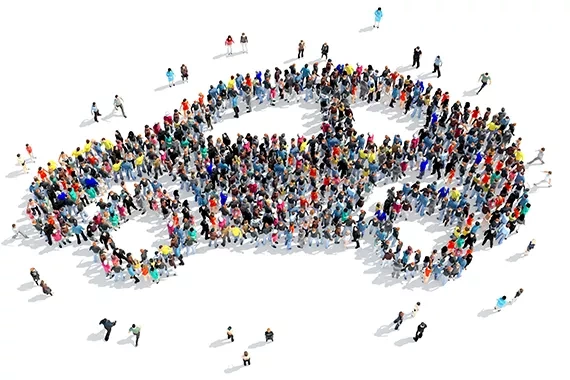
Automotive Case Studies
